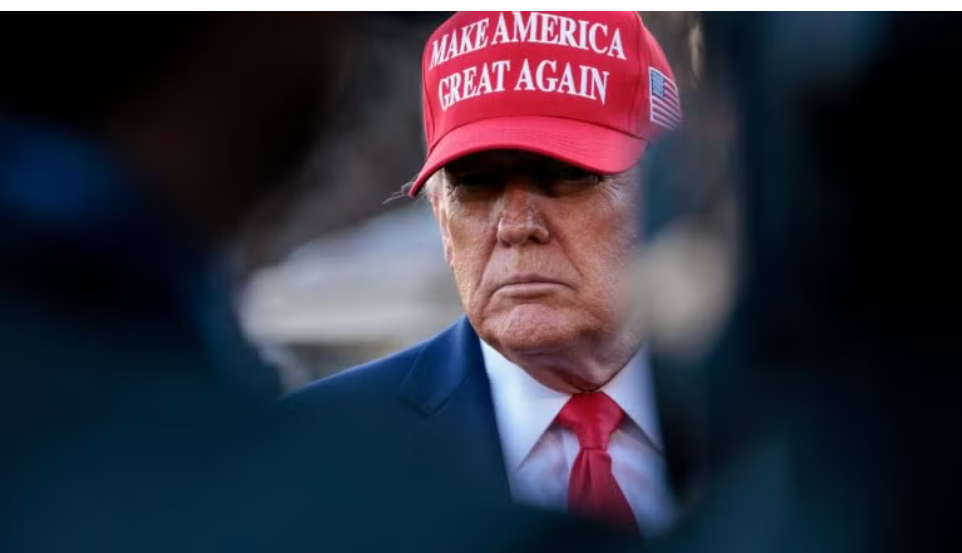Trump, tariffs, trade court: How new developments impact apparel firms

TRUMP, TARIFFS, TRADE COURT: HOW NEW DEVELOPMENTS IMPACT APPAREL FIRMS
A block on Trump's trade tariffs has been halted following a White House appeal, much to the dismay of the US apparel and footwear industries.
Last week, the Court of International Trade ruled that an emergency law invoked by Trump did not give the president unilateral authority to impose tariffs on nearly every country in the world and moved to block the tariffs.
This was followed by Trump being granted a reprieve as the White House appealed to overturn the decision.
The move means tariffs stay in place while the court considers the request filed by the administration.
The petitioners now have until 5 June to file their response with the Court of Appeals, and then the Trump Administration has until 9 June to respond. The Court of Appeals will then take some time to make a decision on the information with logistics experts Alba Wheels Up saying this could take about a week.
This means the International Emergency Economic Powers Act (IEEPA) tariffs remain in effect and will still be due on shipments clearing customs into the US right now.
Alba Wheels Up says it is worth remembering that the Trump Administration still has other avenues it can use to enforce certain tariffs – Section 301 or Section 232 for example – should its appeal fail.
Erik Smithweiss at GDLSK told Alba Wheels Up that as of today, no specific action is required by importers to preserve rights to potential refunds.
“However, depending upon the length of an appeal and future developments, it will likely become necessary for importers to file protests after liquidation of affected entries and/or file a suit in the CIT [Court of International Trade] to preserve refund rights. It is recommended that importers monitor their entries and liquidation status through ACE reports or other means to ensure that timely protests are filed when needed.”
Guidance has also been issued on 30 May on the In-Transit Exclusion from the IEEPA Reciprocal Tariffs, detailing three specific scenarios:
For those countries without a country-specific Reciprocal Tariff Rate:
Articles from any country that were:
(1) Loaded onto a vessel at the port of loading and in-transit on the final mode of transport prior to entry into the United States before 12:01 AM EDT on 5 April 2025, AND (2) Entered for consumption, or withdrawn from warehouse for consumption, between 12:01 AM EDT on April 5th, 2025, and 12:01 AM EDT on 16 June 2025
Declare 9903.01.28 / Free
For those countries with a country-specific Reciprocal Tariff Rate (excluding China):
Articles from any country with a specific rate of duty (9903.01.43-9903.01.76) that were:
(1) loaded onto a vessel at the port of loading and in-transit on the final mode of transport between 12:01 AM EDT on April 5th, 2025, and 12:01 AM EDT on 9 April 2025, AND (2) entered for consumption, or withdrawn from warehouse for consumption, before 12:01 AM EDT on 16 June 2025
Declare 9903.01.25 / 10%
For shipments from China (under 9903.01.63):
Articles the product of China that were:
(1) Loaded onto a vessel at the port of loading and in-transit on the final mode of transport after 12:01 AM EDT on April 9th, 2025, and before 12:01 AM EDT on April 10th, 2025 AND (2) are entered for consumption, or withdrawn from warehouse for consumption, before 12:01 AM EDT on June 16th, 2025
Declare 9903.01.25 / 10%
US apparel and footwear industry slams tariff policy
Trump had told reporters earlier he had no interest in making “sneakers and t-shirts” in the US, adding he wanted to make military equipment, AI and “big things”.
A coalition of industry trade bodies responded to say that under the tariff policy, it was impossible to scale up a domestic footwear and apparel industry.
Footwear and apparel manufacturing are both labour- and capital-intensive,” read a letter signed by the AAFA, FDRA, CFDA, USFIA and SFIA.
“Shoemaking requires a large, skilled workforce dedicated to mastering intricate techniques — it still takes nearly 100 individual steps to produce a basic pair of leather dress shoes. Additionally, there are very few sourcing locations capable of meeting the scale and cost demands of US consumers, and establishing footwear and apparel factories requires years of planning and investment.”
It went on to note the substantial tariff burden faced by the apparel and footwear industry, for decades.
“Children’s shoes often reach rates of 20%, 48%, and higher, while many back-to-school clothing items carry a baseline 32% tariff. These costs ultimately fall on American families, limiting those families from participating in essential activities such as work, recreation, sports, and fitness, all activities that support mentally and physically healthier Americans and help boost the US economy. Any new tariffs should recognise that our industries already exceed the baselines you have proposed and should not be stacked on top of these already elevated rates since that only conveys a cost burden to those US consumers who can afford it least.
“As much as our members would love to manufacture more footwear and apparel in the US, closer to our US consumers, it is simply not feasible to do so at scale right now due to significant supply chain, labour, and cost constraints. Tariff policy cannot overcome these obstacles, especially when it imposes new costs on existing manufacturers in our industry.
“This is a historic opportunity to advance our industries through smart, targeted trade policy. We urge you to adopt a pragmatic framework that reduces the tariff burden on footwear and apparel, increases high-value jobs for US workers, and provides relief to hardworking American families.”
By Just Style
